NEWS
最新消息
10 most-anticipated drug launches of 2020 by FiercePharma
- 分类:最新消息
- 作者:华讯知识产权
- 来源:
- 发布时间:2020-02-21 17:35
- 访问量:
【概要描述】It'sFebruary of2020,whichmeansanotherroundofnewdruglaunchesisalreadyhittingtheroad.ThankstotheteamatEvaluatePharma,FiercePharma has assembledalistofthetop10most-anticipatednewdruglaunchesof2020basedon
10 most-anticipated drug launches of 2020 by FiercePharma
【概要描述】It'sFebruary of2020,whichmeansanotherroundofnewdruglaunchesisalreadyhittingtheroad.ThankstotheteamatEvaluatePharma,FiercePharma has assembledalistofthetop10most-anticipatednewdruglaunchesof2020basedon
- 分类:最新消息
- 作者:华讯知识产权
- 来源:
- 发布时间:2020-02-21 17:35
- 访问量:
It's February of 2020, which means another round of new drug launches is already hitting the road. Thanks to the team at EvaluatePharma, FiercePharma has assembled a list of the top 10 most-anticipated new drug launches of 2020 based on estimated global sales in 2024.
1. Drug: Enhertu (fam-trastuzumab deruxtecan-nxki)
Companies: AstraZeneca, Daiichi Sankyo
Used for: HER2-positive breast cancer
Est. 2024 sales: $2.4 billion
The FDA approved antibody drug conjugate Enhertu in the final days of 2019 as a treatment for patients with inoperable or metastatic HER2-positive breast cancer who have already failed on at least two other treatments in the metastatic setting. Enhertu will come with a boxed label warning for interstitial lung disease and embryo-fetal toxicity. AstraZeneca and Daiichi will jointly develop and sell the drug outside of Japan, where Daiichi holds exclusive rights.
Enhertu is made up of Roche's Herceptin HER2-targeted antibody and a topoisomerase I inhibitor payload and is being tested in gastric cancer as well as in non-small cell lung and colorectal cancer.
The FDA based its approval on the phase 2 Destiny study, where Enhertu shrank tumors in 61% of patients and eliminated them completely in 6%, Daiichi said. A 97% disease control rate included patients who saw some tumor shrinkage but not enough to be considered responders. Nearly all of the Destiny patients (99%) experienced side effects, including nausea, vomiting and low white blood cell counts. Fifteen percent stopped treatment because of side effects, the company said.
2. Drug: ozanimod
Company: Bristol-Myers Squibb
Used for: multiple sclerosis
Est. 2024 sales: $1.598 billion
Ozanimod was a key component of Bristol-Myers Squibb’s $74 billion acquisition of Celgene. Ozanimod is an S1P receptor modulator, designed to dampen inflammatory activity by preventing immune cells from exiting the lymph nodes into the central nervous system. Multiple existing blockbusters and blockbuster hopefuls are targeting the same mechanism.
But to break the blockbuster barrier at all, it’ll have to compete with several FDA-approved drugs, as well as promising experimental drugs. These include Novartis’ $3.3-billion-sales-per-year Gilenya, which is entangled in a patent fight and could face generics sooner than originally expected. Celgene had touted ozanimod’s better safety profile than the older Novartis medication, particularly with regard to liver toxicities and heart side effects. But the MS up-and-comer has other, newer therapies to worry about.
On top of MS, Bristol-Myers is also gunning for ozanimod’s use in inflammatory bowel disease, where it’s in phase 3 testing.
3. Drug: inclisiran
Company: Novartis
Used for: high LDL cholesterol
Est. 2024 sales: $1.529 billion
Existing PCSK9 drugs—Amgen’s Repatha and Sanofi and Regeneron’s Praluent—have largely disappointed in sales, the current annualized sales for the two marketed drugs combined are just $1 billion. However, Novartis thinks it can do it differently with inclisiran, the centerpiece of its much-discussed $9.7 billion acquisition of The Medicines Company.
Inclisiran has put up comparable data on its ability to lower bad cholesterol. The new drug is different from the two antibodies in that it uses a small-interfering RNA to target PCSK9. It’s also given twice a year after two lead-in doses, whereas the two FDA-approved drugs are given every two weeks or once a month.
In the U.S., MedCo—now Novartis—submitted the new drug application for inclisiran to the FDA in December 2019.
4. Drug: Evrenzo (roxadustat)
Companies: FibroGen, AstraZeneca and Astellas
Used for: anemia associated with kidney disease
Est. 2024 sales: $1.488 billion
AstraZeneca, sharing rights with FibroGen has rights to anemia drug Evrenzo (roxadustat) in the U.S. and China, the latter of which has already approved and covered it in both nondialysis-dependent and dialysis-dependent chronic kidney disease patients with anemia. In Japan, its partner Astellas has nabbed a green light for dialysis patients. In the U.S., FibroGen filed for approval in both indications in December 2019.
Roxadustat is the first in the hypoxia-inducible factor prolyl hydroxylase inhibitor class to be approved anywhere. Different from Amgen and Johnson & Johnson’s standard-of-care injection Epogen/Procrit, oral roxa corrects anemia by mimicking a response to reduced oxygen levels.
Roxa could face some in-class competitions soon. These include GlaxoSmithKline’s daprodustat, filed for approval in Japan under a collaboration with Kyowa Kirin. And Akebia Therapeutics and local partner Mitsubishi filed their rival, vadadustat, in Japan in July 2019. In the U.S., Akebia has teamed up with Japanese pharma Otsuka on the anemia treatment.
5. Drug: sacituzumab govitecan
Company: Immunomedics
Used for: triple-negative breast cancer
Est. 2024 sales: $1.44 billion
Triple-negative breast cancer (TNBC) therapy sacituzumab govitecan, as a third-line treatment for late-stage, metastatic TNBC, didn't exactly sail through the FDA: A complete response letter (CRL) in early 2019 nearly sank its approval hopes. But Immunomedics has resubmitted its application for the drug in early December, and the FDA has a decision date set for June.
Sacituzumab govitecan is an antibody drug conjugate including the active ingredient in chemotherapy Onivyde. The chemotherapeutic treatment will be tasked with stacking up against Roche I-O therapy Tecentriq, which was approved to treat TNBC in March.
Cantor analyst Varun Kumar, Ph.D. posited that sacituzumab could be a strong candidate for an acquisition if it nabs an FDA approval as a third-line-or-later treatment. Kumar put the drug's possible acquisition value at $7.1 billion.
6. Drug: filgotinib
Company: Gilead Sciences
Used for: rheumatoid arthritis
Est. 2024 sales: $1.28 billion
With an FDA filing now under speedy review, rheumatoid arthritis candidate filgotinib could go a long way to helping Gilead Sciences push into the anti-inflammatory market.
Filgotinib has already been filed for approval in Europe and Japan, but the U.S. market is where the big bucks will come from, making this an important milestone for Gilead. Recent data readouts shows the medication is better than methotrexate alone while suggesting it has an edge over AbbVie’s Humira, the aging blockbuster rheumatoid arthritis incumbent.
The safety of filgotinib is a particular source of ongoing uncertainty. Gilead and Galapagos think filgotinib is free from some of the safety problems that blighted Pfizer's Xeljanz and Eli Lilly's Olumiant, along with other members of the JAK family. However, AbbVie’s Rinvoq, which, like filgotinib, is specific to JAK1, received a black box warning when it won FDA approval earlier this year.
7. Drug: Palforzia (AR101)
Company: Aimmune
Used for: peanut allergy
Est. 2024 sales: $1.28 billion
On Friday, Jan. 31, the FDA approved Aimmune's Palforzia as a treatment for peanut allergy reactions, including anaphylaxis. Palforzia would set a major precedent in a food allergy field where avoidance is the norm. Despite skepticism from some market watchers, the FDA's approval could put Palforzia on the path to blockbuster status in the next few years.
Palforzia, as a peanut allergy immunotherapy, works by desensitizing patients through gradual doses of peanut protein.
"We believe there are more investor questions on the commercial opportunity for the product given the need for frequent office visits and GI side effects during the up-dosing period," Credit Suisse analyst Vamil Divan, M.D. wrote. "However, we see significant interest in the product from physicians and patients/parents, a side effect profile that appears manageable and a commercial opportunity that can be addressed through a targeted sales force."
8. Drug: valoctocogene roxaparvovec
Company: BioMarin Pharmaceutical
Used for: hemophilia A
Est. 2024 sales: $1.212 billion
BioMarin Pharmaceutical submitted the application for its rival hemophilia A gene therapy, valoctocogene roxaparvovec (valrox), to the FDA at the end of 2019, just as the EMA accepted its package for accelerated review. Meanwhile, its competitor Roche/Spark is still in a lead-in study that tests traditional factor VIII replacement therapy for a future SPK-8011 phase 3.
In preparation for a possible 2020 launch of valrox, BioMarin has upgraded its gene therapy production capacity to 10,000 doses per year, means the company can treat the entire existing severe hemophilia A U.S. patient population in two years—not that it will—ahead of a potential approval for SPK-8011.
Once approved, valrox will first compete for noninhibitor patients against Roche’s antibody drug Hemlibra, which has been rapidly stealing share from factor VIII treatments and contributed CHF 921 million ($950 million) to Roche’s top line in the first 9 months of 2019, because a recent Citi survey of 60 U.S. hematologists showed that they expect to switch 29% of Hemlibra patients and 34% of factor VIII patients over to gene therapy within a year.
9. Drug: rimegepant
Company: Biohaven Pharmaceutical
Used for: migraine
Est. 2024 sales: $897 million
Although Biohaven has already lost the first-to-market oral CGRP race to Allergan, which nabbed an FDA nod for Ubrelvy (ubrogepant) at the end of 2019, industry watchers figured rimegepant represents a more successful sales opportunity, which may be based on the fact that while acute treatment could be rimegepant’s first indication, Biohaven is also looking to expand into the larger prevention market.
Three marketed CGRP drugs—Amgen and Novartis’ Aimovig, Teva’s Ajovy and Eli Lilly’s Emgality—are injections approved to prevent migraine, while Biohaven is aiming to bring an oral option to the table. There’s also Lilly’s newly launched oral drug Reyvow, the first in the serotonin (5-HT)1F receptor agonist class. But the therapy’s side effects, including dizziness and drowsiness, could limit its sales performance to under $500 million at peak.
Biohaven, with oral CGRP migraine drug rimegepant as its first commercial product, has confidence to challenge all those Big Pharma players.
10. Drug: risdiplam
Company: Roche
Used for: spinal muscular atrophy
Est. 2024 sales: $803 million
Roche's risdiplam will follow Novartis' Zolgensma and Biogen's Spinraza into the spinal muscular atrophy market, if the FDA gives it the green light by its May decision deadline.
Risdiplam, a survival motor neuron 2 splicing modifier, is an orally administered liquid that patients would take at home. Biogen's Spinraza is an injection with several loading doses over the first two-and-a-half months and maintenance doses every four months thereafter. Novartis’ gene therapy Zolgensma is a one-time treatment for patients under 2.
If the oral drug reaches approval, Cantor analyst Alethia Young said in a recent note that it could be a "game changer" in SMA.


美国联邦巡回上诉法院表示娇生公司 全球畅销精神分裂症药物的专利可能无效

注射用醋酸地加瑞克专利无效口审将于本月底进行

外观专利如何进行海外布局?










